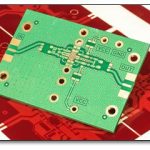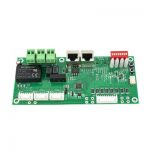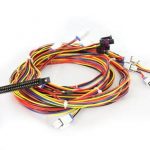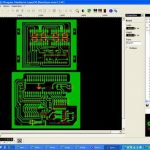1. Increased Adoption of Industry 4.0 Technologies
Industry 4.0, also known as the Fourth Industrial Revolution, is transforming the electronics manufacturing sector. This trend encompasses the integration of advanced technologies such as artificial intelligence (AI), the Internet of Things (IoT), robotics, and automation into the manufacturing process. By 2024, we can expect to see a surge in the adoption of these technologies across the industry.
Benefits of Industry 4.0 in Electronics Manufacturing
| Benefit | Description |
|---|---|
| Enhanced Efficiency | Automation and robotics streamline processes, reducing lead times and increasing productivity. |
| Improved Quality | AI-powered quality control systems detect and prevent defects, ensuring higher product quality. |
| Cost Reduction | Optimized resource utilization and reduced labor costs lead to overall cost savings. |
| Flexibility | Smart factories can quickly adapt to changing market demands and product variations. |
Key Technologies Driving Industry 4.0
- Artificial Intelligence (AI) and Machine Learning (ML)
- Internet of Things (IoT) and Industrial IoT (IIoT)
- Robotics and Automation
- Big Data Analytics
- Cloud Computing and Edge Computing
2. Shift Towards Sustainable and Eco-Friendly Manufacturing
Sustainability has become a top priority for businesses and consumers alike. In the electronics manufacturing industry, there is a growing emphasis on adopting eco-friendly practices and reducing the environmental impact of production processes. By 2024, we can expect to see a significant shift towards sustainable manufacturing practices.
Sustainable Manufacturing Practices in Electronics Industry
- Reduction of Hazardous Substances:
- Compliance with RoHS (Restriction of Hazardous Substances) regulations
-
Transition to lead-free soldering and elimination of harmful chemicals
-
Energy Efficiency and Renewable Energy:
- Implementation of energy-efficient equipment and processes
-
Adoption of renewable energy sources such as solar and wind power
-
Waste Management and Recycling:
- Proper disposal and recycling of electronic waste (e-waste)
-
Implementation of circular economy principles to minimize waste
-
Sustainable Product Design:
- Design for recyclability and easy disassembly
- Use of eco-friendly materials and packaging
3. Rise of 5G and IoT Devices
The deployment of 5G networks and the proliferation of IoT devices are set to revolutionize the electronics manufacturing industry. 5G technology offers faster data speeds, lower latency, and increased connectivity, enabling a wide range of new applications and use cases. By 2024, the demand for 5G-enabled devices and IoT solutions is expected to skyrocket.
Impact of 5G on Electronics Manufacturing
- Increased demand for 5G-compatible components and devices
- Need for advanced manufacturing capabilities to produce complex 5G electronics
- Opportunities for innovation in areas such as smart homes, autonomous vehicles, and industrial IoT
IoT Devices and Applications
| Category | Examples |
|---|---|
| Smart Home Devices | Smart speakers, smart thermostats, smart lighting, home security systems |
| Wearable Devices | Smartwatches, fitness trackers, smart glasses, hearables |
| Industrial IoT | Smart factories, predictive maintenance, asset tracking, energy management |
| Connected Vehicles | In-vehicle infotainment systems, telematics, advanced driver assistance systems (ADAS) |

4. Miniaturization and High-Density Packaging
The trend towards miniaturization and high-density packaging in electronics manufacturing is expected to continue in 2024. As consumer devices become smaller and more powerful, manufacturers are faced with the challenge of fitting more components into limited space while maintaining performance and reliability.
Advancements in Miniaturization and Packaging Technologies
- 3D integrated circuits (3D ICs) and through-silicon vias (TSVs)
- Embedded components and system-in-package (SiP) solutions
- Advanced substrate materials and high-density interconnect (HDI) PCBs
- Micro-electromechanical systems (MEMS) and Nano-electromechanical systems (NEMS)
Benefits of Miniaturization and High-Density Packaging
- Reduced form factors and increased portability of devices
- Enhanced performance and functionality in compact designs
- Improved power efficiency and thermal management
- Cost reduction through efficient use of space and materials
5. Emphasis on Cybersecurity in Connected Devices
As the number of connected devices continues to grow, cybersecurity becomes a critical concern for the electronics manufacturing industry. With the increasing risk of cyberattacks and data breaches, manufacturers must prioritize the integration of robust security measures into their products. By 2024, we can expect to see a heightened focus on cybersecurity throughout the product lifecycle.
Cybersecurity Measures in Electronics Manufacturing
- Secure by Design:
- Incorporation of security features and best practices during product design and development
-
Implementation of secure boot, firmware updates, and data encryption
-
Supply Chain Security:
- Verification and validation of components and software from trusted sources
-
Secure management of firmware and software updates throughout the supply chain
-
Threat Detection and Response:
- Integration of intrusion detection and prevention systems
-
Continuous monitoring and analysis of device behavior for anomalies and threats
-
Compliance with Security Standards:
- Adherence to industry-specific security standards and regulations (e.g., IEC 62443, NIST Cybersecurity Framework)
- Regular security audits and vulnerability assessments
6. Adoption of Additive Manufacturing (3D Printing)
Additive manufacturing, also known as 3D printing, is gaining traction in the electronics manufacturing industry. This technology offers several advantages, such as rapid prototyping, customization, and on-demand production. By 2024, we can expect to see increased adoption of additive manufacturing techniques in electronics manufacturing.
Applications of Additive Manufacturing in Electronics
- Rapid prototyping and product development
- Customized and low-volume production
- Fabrication of complex geometries and lightweight structures
- Printing of conductive traces and embedded electronics
- Production of custom packaging and enclosures
Benefits of Additive Manufacturing
- Reduced lead times and faster time-to-market
- Cost-effective for low-volume and customized production
- Increased design freedom and flexibility
- Reduced waste and material consumption
- Potential for on-site and on-demand manufacturing
7. Skilled Workforce and Talent Development
As the electronics manufacturing industry evolves, the demand for skilled workers with expertise in emerging technologies will continue to grow. By 2024, there will be a significant focus on talent development and upskilling to meet the changing needs of the industry.
Key Skills Required in Electronics Manufacturing
| Skill Category | Examples |
|---|---|
| Technical Skills | Programming, data analysis, CAD/CAM, 3D printing, robotics |
| Soft Skills | Problem-solving, communication, teamwork, adaptability |
| Domain Knowledge | Industry 4.0 technologies, sustainable manufacturing, cybersecurity |
Strategies for Talent Development
- Partnerships with Educational Institutions:
- Collaboration with universities and vocational schools to develop relevant curricula
-
Internships and apprenticeship programs to provide hands-on experience
-
In-House Training and Upskilling:
- Continuous learning and development programs for existing employees
-
Cross-functional training to foster a versatile workforce
-
Attracting and Retaining Talent:
- Competitive compensation and benefits packages
- Fostering a culture of innovation and employee engagement
- Providing opportunities for career growth and advancement
8. Increased Focus on Supply Chain Resilience
The COVID-19 pandemic has highlighted the importance of supply chain resilience in the electronics manufacturing industry. Disruptions in the global supply chain have led to production delays, component shortages, and increased costs. By 2024, we can expect to see a heightened focus on building more resilient and agile supply chains.
Strategies for Enhancing Supply Chain Resilience
- Diversification of Suppliers:
- Reducing dependence on single-source suppliers
-
Establishing relationships with alternative suppliers in different geographic locations
-
Local Sourcing and Reshoring:
- Increasing local sourcing of components and materials
-
Reshoring manufacturing operations to reduce reliance on global supply chains
-
Inventory Management and Demand Forecasting:
- Implementing advanced inventory management systems to optimize stock levels
-
Utilizing data analytics and AI for accurate demand forecasting
-
Supply Chain Visibility and Risk Management:
- Investing in supply chain visibility tools to track and monitor the flow of goods
- Conducting regular risk assessments and implementing risk mitigation strategies
Frequently Asked Questions (FAQ)
-
Q: How will the adoption of Industry 4.0 technologies impact job roles in electronics manufacturing?
A: While Industry 4.0 technologies may automate certain tasks, they will also create new job roles that require skills in areas such as programming, data analysis, and robotics. Upskilling and reskilling initiatives will be crucial to prepare the workforce for these changes. -
Q: What are the challenges in implementing sustainable manufacturing practices in the electronics industry?
A: Some challenges include the initial investment costs, the need for technological upgrades, and the complexity of managing sustainable supply chains. However, the long-term benefits of sustainable practices, such as reduced environmental impact and improved brand reputation, often outweigh the challenges. -
Q: How will the rise of 5G and IoT devices affect the demand for electronics manufacturing services?
A: The proliferation of 5G and IoT devices will drive significant growth in the demand for electronics manufacturing services. Manufacturers will need to invest in advanced capabilities to produce these complex devices and meet the increasing demand. -
Q: What are the benefits of additive manufacturing in electronics manufacturing?
A: Additive manufacturing offers several benefits, including rapid prototyping, customization, reduced lead times, and cost-effective low-volume production. It enables the fabrication of complex geometries and lightweight structures, which can enhance product performance and functionality. -
Q: How can electronics manufacturers ensure the cybersecurity of their connected devices?
A: Manufacturers can ensure cybersecurity by incorporating security features during product design, implementing secure boot and data encryption, verifying components from trusted sources, and adhering to industry-specific security standards. Regular security audits and vulnerability assessments are also crucial to identify and address potential threats.
Conclusion
The electronics manufacturing industry is poised for significant transformation in the coming years. The top 8 trends and predictions discussed in this article, including the adoption of Industry 4.0 technologies, sustainable manufacturing practices, the rise of 5G and IoT devices, miniaturization and high-density packaging, cybersecurity, additive manufacturing, skilled workforce development, and supply chain resilience, will shape the industry landscape by 2024.
To stay competitive in this rapidly evolving industry, electronics manufacturers must proactively embrace these trends and adapt their strategies accordingly. By investing in advanced technologies, prioritizing sustainability, ensuring cybersecurity, and developing a skilled workforce, manufacturers can position themselves for success in the future.
As the electronics manufacturing industry continues to evolve, it is crucial for businesses to stay informed, agile, and innovative. By understanding and leveraging these trends and predictions, manufacturers can drive growth, improve efficiency, and deliver cutting-edge products that meet the changing needs of consumers and businesses alike.






Leave a Reply